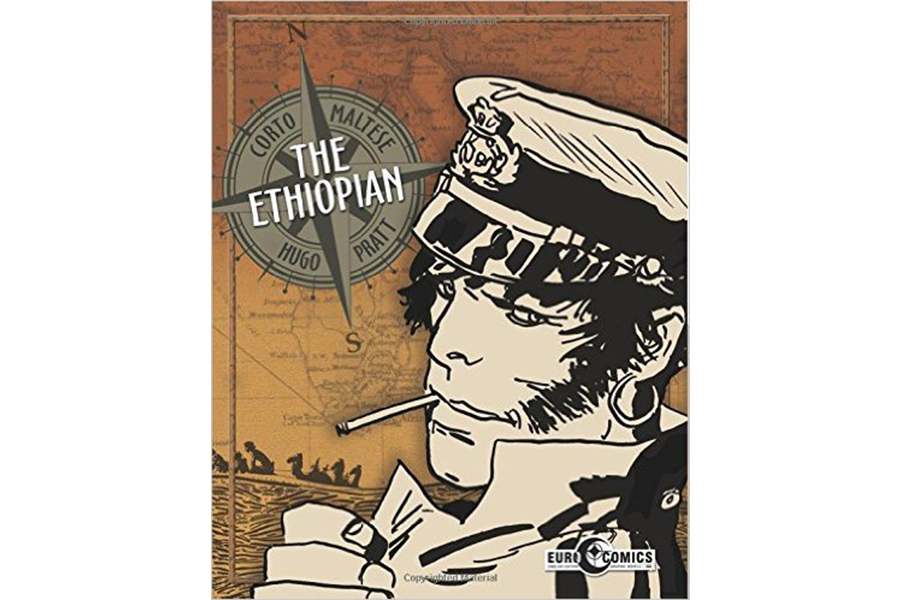'Corto Maltese: The Ethiopian' brings a legendary Italian comic figure to the US
Loading...
Corto Maltese is a famous comic character you've probably never heard of. Created in 1967 by acclaimed Italian comic book creator Hugo Pratt, Corto Maltese is an enigmatic sea captain who has exotic adventures steeped in early 20th-century history (roughly 1900-1920).
Corto Maltese: The Ethiopian, the latest volume in the series of English translations by EuroComics, has Corto not on sea but land, specifically Yemen and East Africa, in 1918. This volume has four stories set during a time when European nations, reeling from World War I, are struggling to keep possession of their colonies, fighting each other and the indigenous people. Corto, although an impartial observer friendly with both the Germans and the British, tends to ally himself with the native people. This is accentuated by his friendship with the title character of this volume – the warrior Cush.
Although friends this pair couldn't be more different. Cush, a devout Muslim, is constantly berating Corto for his heathen ways, even as Corto is constantly questioning Cush for his violent ways. But they are in agreement when it comes to righting a wrong or helping the native people.
Corto meets Cush in the first story, '"In The Name of Allah, The Merciful And Compassionate" in the sands of Yemen as they attempt to rescue an Arab prince from his evil uncle and his Ottoman Empire allies.
The second tale, "The Coup De Grace" finds Corto and Cush in Somaliland caught in a battle between a racist commander of a British fort and Mohammed Abdullah Hassan's Dervish army. Hassan is an actual historic figure, called the Mad Mullah by the British, who established the Dervish State in Somalia from 1897-1920.
In "…And Of Other Romeos And Other Juliets," Corto accompanies Cush back to his village in the Daniki desert region of northern Ethiopia. There he meets the mysterious shaman Shamael and helps quell a dispute between two tribes.
The last tale, "The Leopard-Men Of The Rufiji," finds Corto among German forces in eastern Africa where he learns of the African justice of the native Leopard-Men. Another link to history – even though World War I was drawing to an end, the German army, led by General Paul Emil von Lettow-Vorbeck, was still active in eastern Africa. And the Leopard-Men are taken from the real-life Leopard Society that operated in West Africa.
Pratt's stories reflect his disdain for empires and religion, personified by his character Corto Maltese. While friend to many, Corto questions both Europeans and Africans on their loyalties and beliefs. But he has a strict moral code to help those in need or anyone being treated unfairly. He even shows mercy and pity for his enemies.
Pratt's art is gorgeous. His style is similar to that of Milt Caniff and Alex Toth with heavy uses of blacks. This gives his stories even more added mood and drama. Pratt's art has been highly praised, winning numerous awards in his lifetime and exhibited in many shows throughout Europe. Pratt, who died in 1995, is considered one of the masters of the graphic novel and has been hailed as "the inventor of the literary comic strip."
Kudos to EuroComics, an imprint of IDW comics, for such a handsome book. The stories are reproduced in rich black and white as they were originally presented. A special shoutout to editor Dean Mullaney and his co-translator Simone Castaldi for adapting these stories to English from Pratt's original Italian scripts.
If you have a hankering for adventure stories with a historical setting, you'll love this series. This is volume six of a 12-book collection so you'll have plenty of Corto Maltese to feast on.






